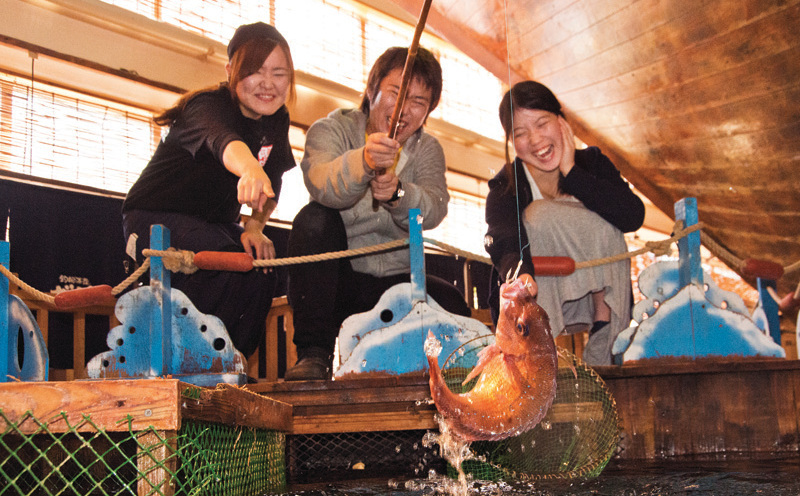Fish-Your-Dinner Restaurant ZAUO Combines Joys Of Sushi With Frustrations Of Fishing
You may have heard of this timeless aphorism: "Give a man a fish, and you feed him for a day. Teach a man to fish, and you may charge them a hefty fee at a novelty restaurant in New York City."
Japanese restaurant ZAUO, which plans to debut its first U.S. location in New York's Chelsea neighborhood next month, takes the choose-your-own-adventure one step further: You can catch your own fish for dinner.
"The idea of 'how fun it would be to have a restaurant where you could fish on a boat' was what gave birth to our creation, ZAUO." That's the entirety of the "about" section of the restaurant's Facebook page, and it neatly sums up the thrust of the place.
Guests sit down at tables on a wooden boat floating atop a waist-deep pool full of fish. Then, for a small fee, rent a pole-and-bait combo and throw that hook "overboard" in an effort to catch one of the various species of fish below. According to ZAUO's website, you should inform your server of the type of fish you wish to catch, as they will help you "aim at prey." Once you've reeled in dinner, staff whisks away your catch to prepare it in the method of your choosing—sashimi, fried and grilled. (If you want to be a stick in the mud, you can also choose from pre-caught fish.)

The family-owned ZAUO empire has 13 restaurants in Japan, but was interested in bringing the concept to the U.S. to prove the haters wrong. "Half the people we met said it's a really interesting concept, and the other half said it's impossible," Takuya Takahashi, son of the restaurant's founder, Noriki Takahashi, tells Eater. "That made me want to bring it more."
An obvious reaction to hearing about this concept is dismissing it as a gimmick—hey, didn't that work for Benihana and Hooters? But the Takahashi family says the fish-for-your-food schtick is not only entertainment but an opportunity to show diners where their dinner comes from.
"We do want people to have a good time, but there's a message we want to send that you're eating a life. You're killing a fish and eating it, and in Japan we pray before every meal and say, 'Thank you for the lives you have given.' Thats the message behind this restaurant," Noriki's other son Kazuhisha Takashi tells Eater.
I'm left with a few questions, namely, what happens if I'm a less than successful fisherperson? ZAUO's website assures me that "if you cannot catch easily, you can listen to the fishing tips from the staff." It would be just my luck to still be watching my bobber while everyone else feasts on their sashimi.
